Linear programming allows one to determine the best use of resources based on constraints to achieve a desired objective.
Objective: The goal of the problem, which is usually to maximize or minimize an outcome. The objective function is an equation that calculates the desired outcome based on the decision variables.
Decision variables: The controllable inputs to a problem that utilize resources and contribute to the objective function. These are often the product or service being produced from the resources available.
Constraints: The limitations placed on the problem due to resource availability and how those resources must be used.
Linear programming: A series of equations that achieve a solution that will minimize or maximize the objective function. Note that not all linear programming models will achieve a solution that supports all constraints. However, in academic examples, a solution will be achievable.
7 Steps for Problem Formulation
Understanding the problem and extracting the correct information to address the problem are key success areas. By following the seven steps listed below, you should be able to discern what the problem is, describe the objective, decision variables, and constraints, and set up the linear programming model.
1. Understand the problem thoroughly
2. Describe each objective
3. Describe each constraint
4. Define the decision variables
5. Write the objective in terms of the decision variables
6. Write the constraints in terms of the decision variables
7. Add the negativity constraints
Applying the 7 Steps of Problem Formulation
(Developed from Anderson et al., 2016)
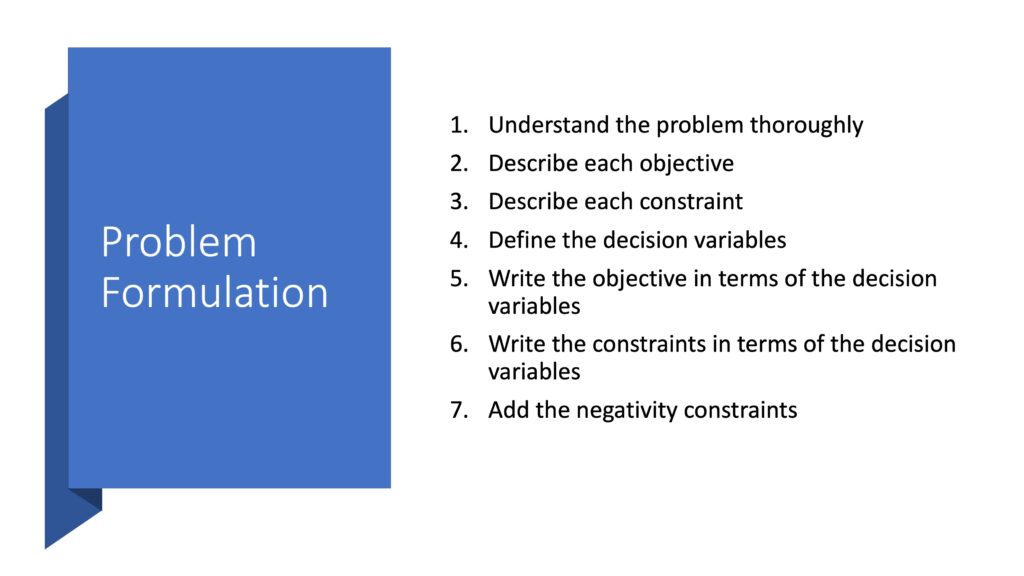
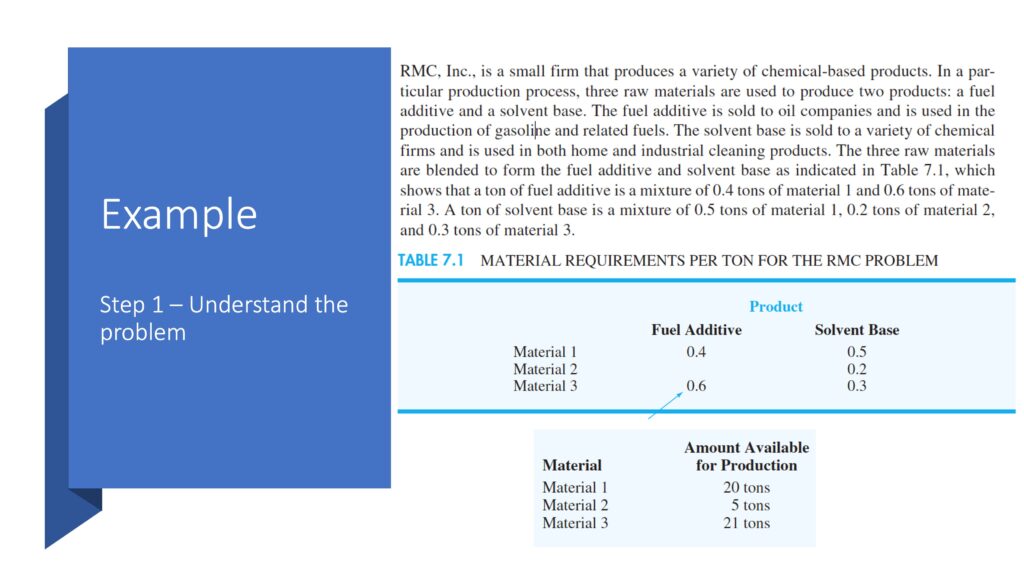





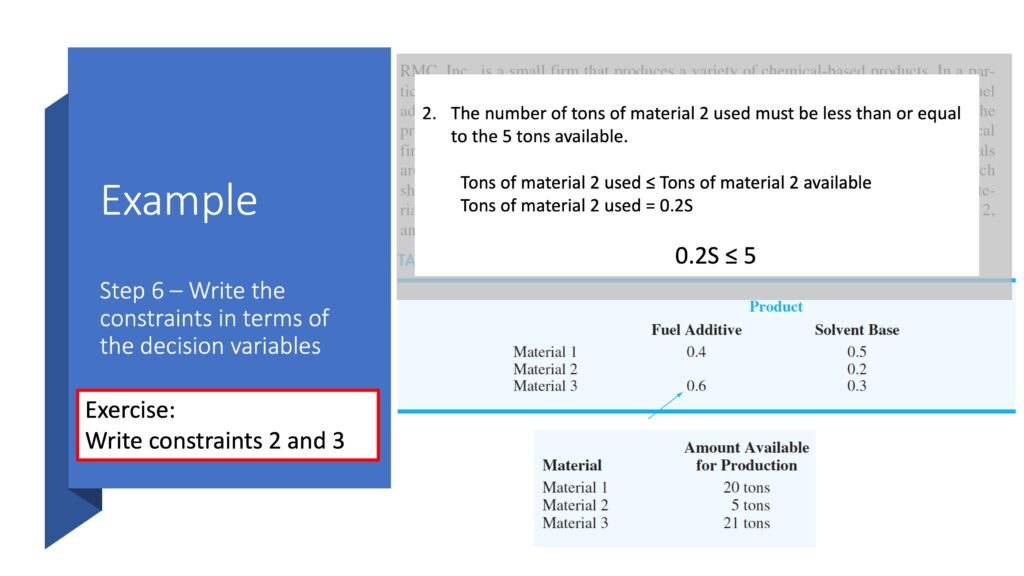

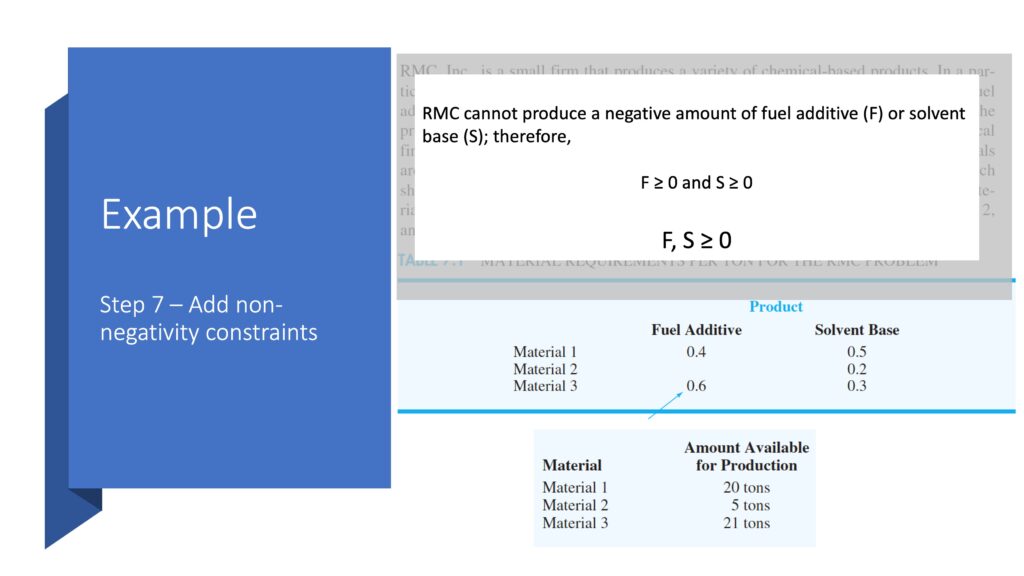
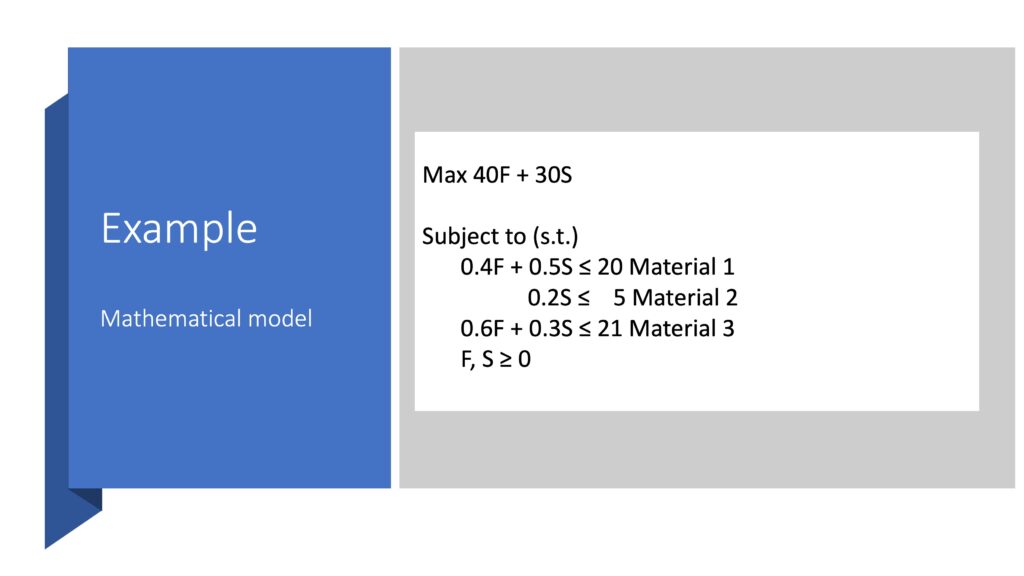
Solving the Linear Programming Model with Excel Solver
Requires Microsoft Excel with Solver add-in
Resources
Excel file includes additional problems with solutions. The problem descriptions, including background narratives are available in the presentation slides.
Reference
Anderson, D. R., Sweeney, D. J., Williams, T. A., Camm, J. D., Cochran, J. J., Fry, M. J., & Ohlmann, J. W. (2016). Quantitative methods for business (13th ed.). Cengage.

